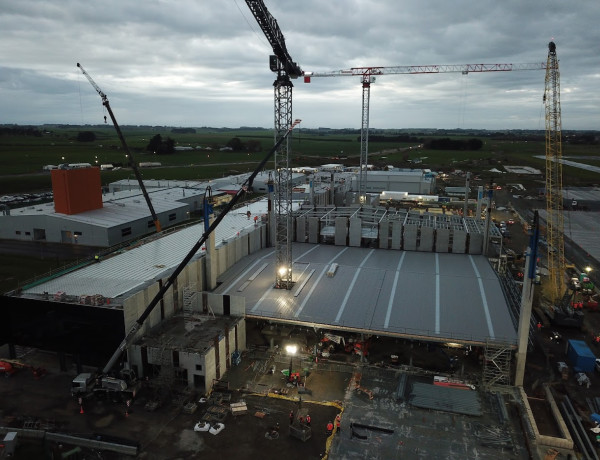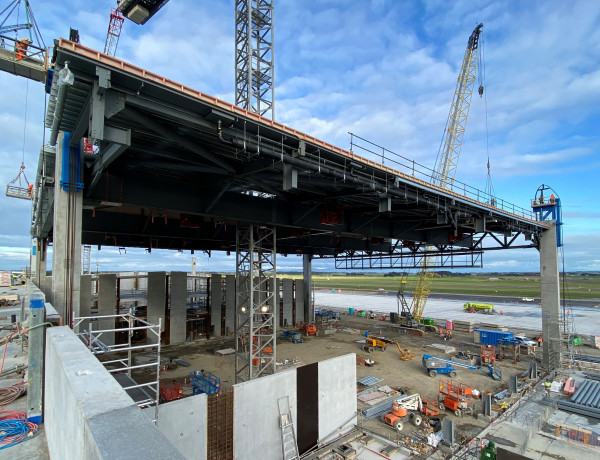A 500 tonne roof has been lifted into place 33 metres above the ground at Base Ohakea, a very visual sign of progress being made on the $250 million infrastructure build to support the P-8A Poseidons.
The feat of engineering represents just half of the roof of the new building Te Whare Toroa, which will include two hangers, maintenance and support facilities, warehousing for spare parts, and a mission support centre.
“Seeing the images of the roof be lifted into place over a six hour period shows the immense scale of this build. We are pleased to have achieved this milestone, and are on track with the build and looking forward to the arrival of the first aircraft later this year,” Sarah Minson, Director Air Domain at Manatū Kaupapa Waonga New Zealand Ministry of Defence.
The infrastructure build is a three year project and a significant investment for the region with the main contractors Hawkins and Fulton Hogan, and their 25 subcontractors, having an average of 250 workers on site each day.
“Having the roof raised on the hangar is an exciting milestone for all involved in the P8 team. It’s a visual indication that we have a number of major milestones ahead culminating in the arrival of our first P-8A in December,” Wing Commander Mark Whiteside said.
“It will also be the first real chance for the wider Air Force and Ohakea community to visually see the size and scale of the investment being made into the base.”
The P-8A’s are on schedule to replace the P-3K2 Orions from 2023 and the three year infrastructure build is on track for completion by the end of 2023.
This project is a significant investment to strengthen Aotearoa’s maritime surveillance capability. The P-8A Poseidons will be able to undertake search and rescue operations throughout the Pacific and south to Antarctica, protection of the southern ocean, humanitarian and disaster relief in Pacific and Aotearoa, as well as protection of fishing resources in New Zealand’s large exclusive zone (EEZ) and in remote areas such as the southern ocean and around Pacific Island nations.


